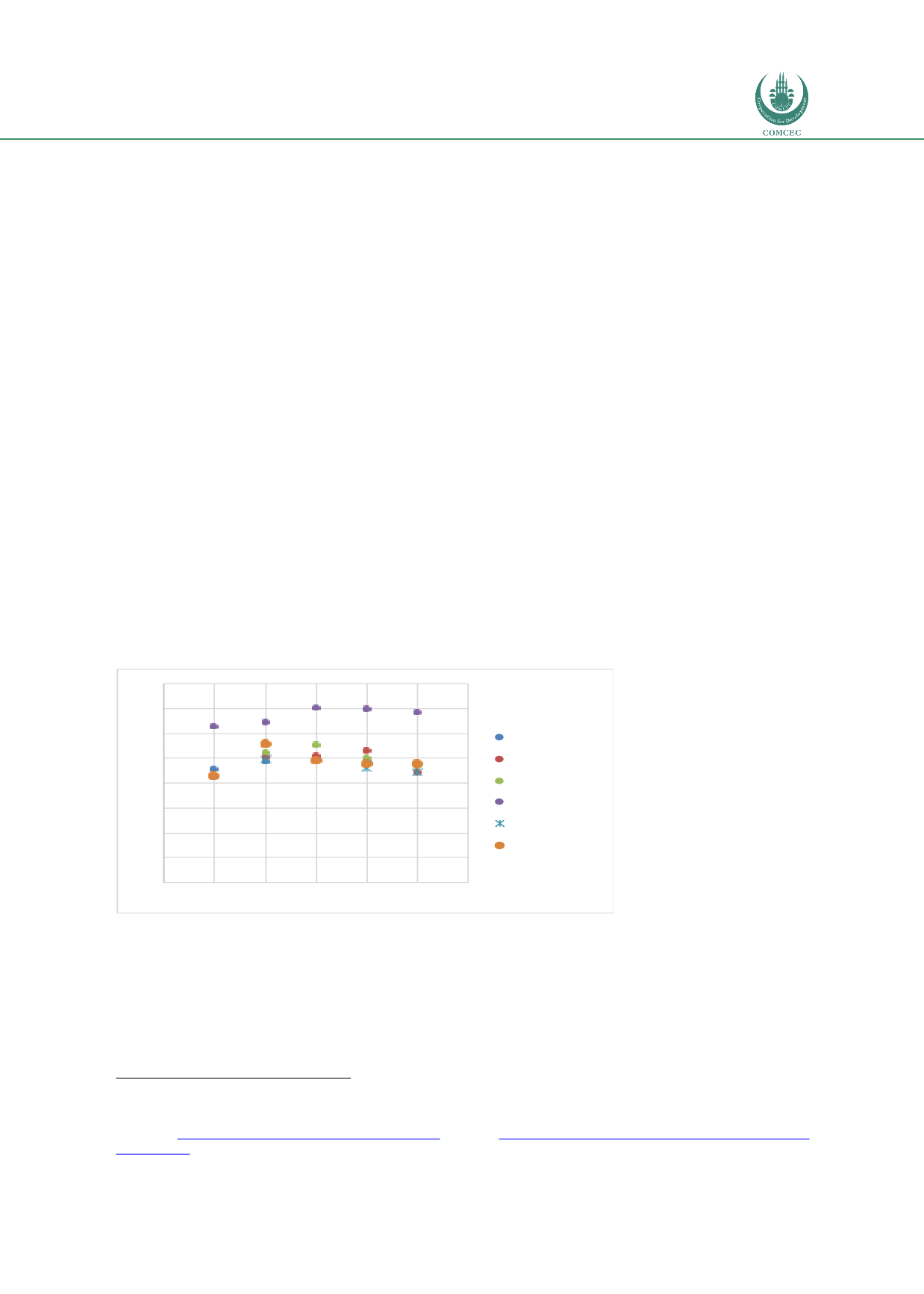

Improving Transnational Transport Corridors
In the OIC Member Countries: Concepts and Cases
81
TRACECA asks the member countries about border crossing times, but it seems that the replies
are not fully useful to make up a coherent picture (Ismayil, 2017). For road transport,
TRACECA also works with the International Road Transport Union (IRU), which asked road
hauliers about the border transit times in the NELTI project
32
but monitoring seems to have
stopped after 2009. TRACECA has a hotline system; the road hauliers/chauffeurs have a phone
number to the national coordinators and can report border crossing and other issues relating
to corridor performance. They are recorded and at the meetings, the accumulated lists are
discussed with an aim to remove bottlenecks. Rail border crossing is difficult and the paper
process can take 5-6 hours. Good examples are the new rail link Iran-Armenia with single
border control as well as the border Ukraine-Moldova.
The main border crossings, but not all, offer 24 hour service. (Ismayil, 2017) does not consider
interoperability a significant problem today, but it might become problematic when flows
increase.
A good indicator for capturing much of the desired information and for measuring the overall
effectiveness of corridor performance is the LPI. It indicates the easiness and efficiency of
trade in a country. This compilation includes customs and border procedures quality and
competence, infrastructure, tracking and tracing of goods in transit, paperwork needed for
international shipments and punctuality/timeliness. The World Bank issues the LPI (Arvis
et
al.
, 2016) and the TRACECA member states are on the list as shown i
n Figure 29.Figure 29: Logistics Performance Index in TRACECA Member states
Source: Fimotions (2017), data source: The World Bank.
For the longer flows between Europe and the Far East, TRACECA routes mainly compete with
inter-continental shipping and rail through Russia. A major concern for the competitiveness is
the number of border crossings, so this section focuses how TRACECA addresses the
administrative interface between member countries, whereas more technical harmonisation is
dealt with under Technical and Operational factors.
32
See
http://www.iru-nelti.org/index/en_nelti_indexand
http://www.unescap.org/resources/timecost-distance- methodology on IRU’s initiative.
0.00
0.50
1.00
1.50
2.00
2.50
3.00
3.50
4.00
2007 2010 2012 2014 2016
Azerbaijan
Armenia
Georgia
Turkey
Turkmenistan
Uzbekistan
















